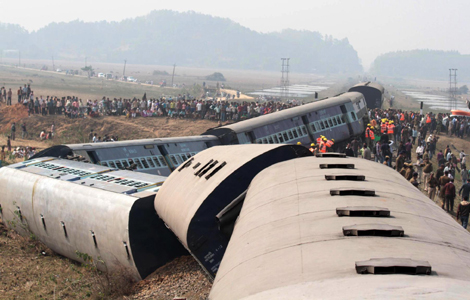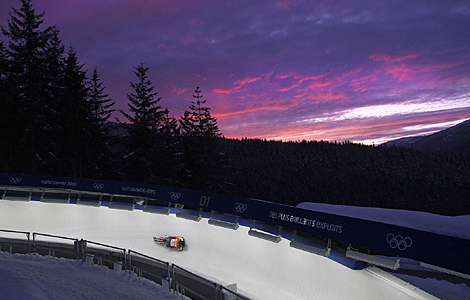Cadmium pollution cleanup effective: experts
Updated: 2012-02-04 14:38
(Xinhua)
|
|||||||||||
LIUZHOU, Guangxi - The measures adopted to bring down cadmium concentration levels following a toxic spill in a river of south China's Guangxi Zhuang autonomous region are safe and effective, experts have told Xinhua.
By 6 am Saturday, the water quality of the Liujiang River, a source of drinking water for local residents, is up to national standard, according to data released by the emergency headquarters handling the incident.
Neutralizers designed to gather the matter and ease its removal have been placed in the waterway, and agents designed for dilution in water discharged from upriver dams, Xu Zhencheng, deputy chief of the South China Institute of Environmental Sciences (SCIES) under the Ministry of the Environmental Protection, said in an exclusive interview with Xinhua.
Xu said cleanup procedures organized by the team of more than 100 environmental and water experts that he heads had brought peak cadmium concentrations down from 80 times the official limit to less than 20 times the limit.
Cadmium pollution was first detected in the Longjiang River on January 15 in the city of Hechi, and it later spread to the downstream Liujiang River, threatening water security in Liuzhou, a city with 1.5 million permanent residents.
Police officers have been mobilized to join in the cleanup work and the ongoing efforts are expected to run until the end of February.
Prof. Zhang Xiaojian, a team member from Tsinghua University, said the neutralizers used were harmless to human health. They include common compounds used for water purification.
The neutralizers, mainly caustic soda, lime and aluminum chloride, will help increase the PH value and form precipitation compounds, such as cadmium carbonate and cadmium hydroxide.
Experts decided the amount of neutralizers to be dumped according to different cadmium concentration levels along the rivers.
Zhang said the team would monitor the water quality in the long term to eliminate the incident's impact on the environment.
Guo Qingwei, a senior engineer with the SCIES, added, "At each neutralizer dumping point, we locked down 40 to 60 percent of the cadmium amount. The percentage is adequate to ensure drinking water quality for Liuzhou city."
Cadmium is a carcinogenic chemical mostly found in industrial effluents.
Investigations found two factories, one producing a dye product called lithopone without a license, and the other a metallurgical chemical plant, to be responsible for the incident. They had illegally discharged highly contaminated sewage, the headquarters confirmed at a press conference on Friday.
Inspections are still under way to screen other factories along the rivers for similar practices.
Hot Topics
Kim Jong-il, Mengniu, train crash probe, Vaclav Havel, New Year, coast guard death, Internet security, Mekong River, Strait of Hormuz, economic work conference
Editor's Picks

|

|

|

|

|

|







